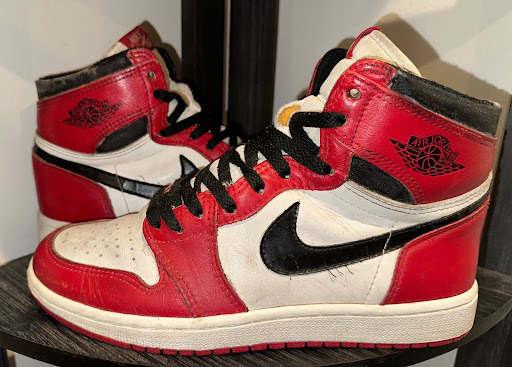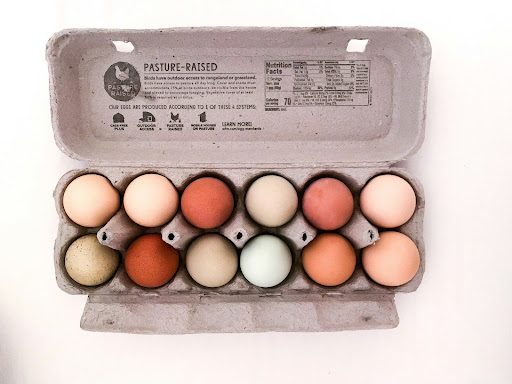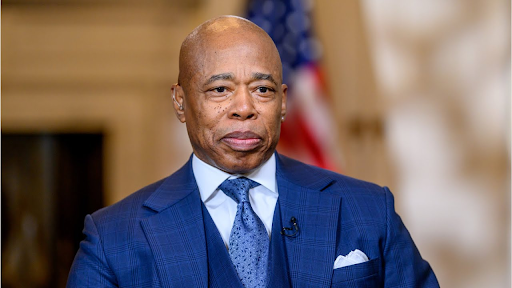
I was preparing to leave my house in another man’s 36-year-old gym shoes — but it didn’t feel that way. As I looked down at the faded Chicago-inspired color-blocking, which had developed a beautiful patina over time, I felt as if I could fly. That feeling became addicting.
Growing up in an era where people cared more about the value of a sneaker than the story, I strived to be different. Occasionally, did I succumb to ridiculous price markups because of “hype?” Sure. Every collector has. But I also made damn sure that I knew my history.
It was May of 2020. I had just finished watching “The Last Dance.” At this point, while many pairs of sneakers had found their way into my collection, I had never owned something truly unique. Until then, anyone could have replicated my collection with a few monthly paychecks.
I wasn’t looking for some ultra-exclusive pair. I was looking for something I could add my own touch to, all while still honoring the culture. After months of research, I finally found the perfect pair of original 1985 Air Jordan 1’s. Boy, were they beat. The sole had completely hardened and yellowed. The heels had been worn down, exposing holes towards the rear of the shoe. The once black vinyl-covered collars laid bare, exposing a dingy beige fabric. Tasked with my first-ever restoration process, I discovered a new passion.
For some, they must be the original owner of a pair for it to feel like “theirs.” For me, through the process of scrubbing the uppers, conditioning the perfectly-aged leather and stitching on a brand-new sole, these vintage sneakers began to feel like “mine.”
This sparked the addiction, and it only continued. Jordan was always my preference, but over time I fell in love with another culture-filled phenomenon, the Nike SB. After many celebrities began busting out vintage pairs of SBs during the late 2010s, prices skyrocketed. To this day, some pairs still out-value new cars.
Growing up a “Star Wars” fanatic, I couldn’t pass on the “Jedi” colorway from a 2004 SB release. Typically appraising for around $2400 in my size, I found a pair for just $200. Much like the Jordans, they needed some serious work, but I didn’t mind. It didn’t appear to me as “work.” I genuinely enjoyed throwing on some ‘80s classic rock and locking myself in my room to restore my old sneakers.
On a less endearing level, Nike conducts a similar process. Since 1992, the company claims to have recycled over 140 million pounds of worn-out sneakers into Nike “Grind,” which they repurpose into materials for partnering brands. Over three decades, “Grind” was used to construct new sneaker releases, athletic fields and even tech accessories. Disguised as striving for a healthier environment, their motive differs from mine.
On the surface, Nike is appeasing environmentalists, acting as the “good guy” for athleticwear companies. Their take on “restoration” resonates more with “replacement” or “destruction.” With each project I take on, my goal is to preserve and appreciate details from these vintage relics. Nike is making the savvy business decision to repurpose their old product and monetize the results. They are a retail company, and will prioritize dollar signs over anything. That I understand, but do not attempt to glorify the process to your consumer with hopes that they will spend another $200 on an ugly recycled sneaker, when they can add a piece of history to their collection for the same price.
Not only do the vintage products contain more character, but they are often made of higher quality. The craftsmanship in vintage pairs far surpasses today’s. Most modern products arrive smelling of glue and fake leather, emphasizing the low-quality materials.
Personally, I prefer 36-year-old foot odor to the aroma of a factory and cheap glue.
While that will sound outlandish to some, and downright disgusting to others, it doesn’t bother me. I know that after one cleaning, the odor will leave and that distinct smell of genuine leather will remain. That smell of quality. That smell of greatness.








